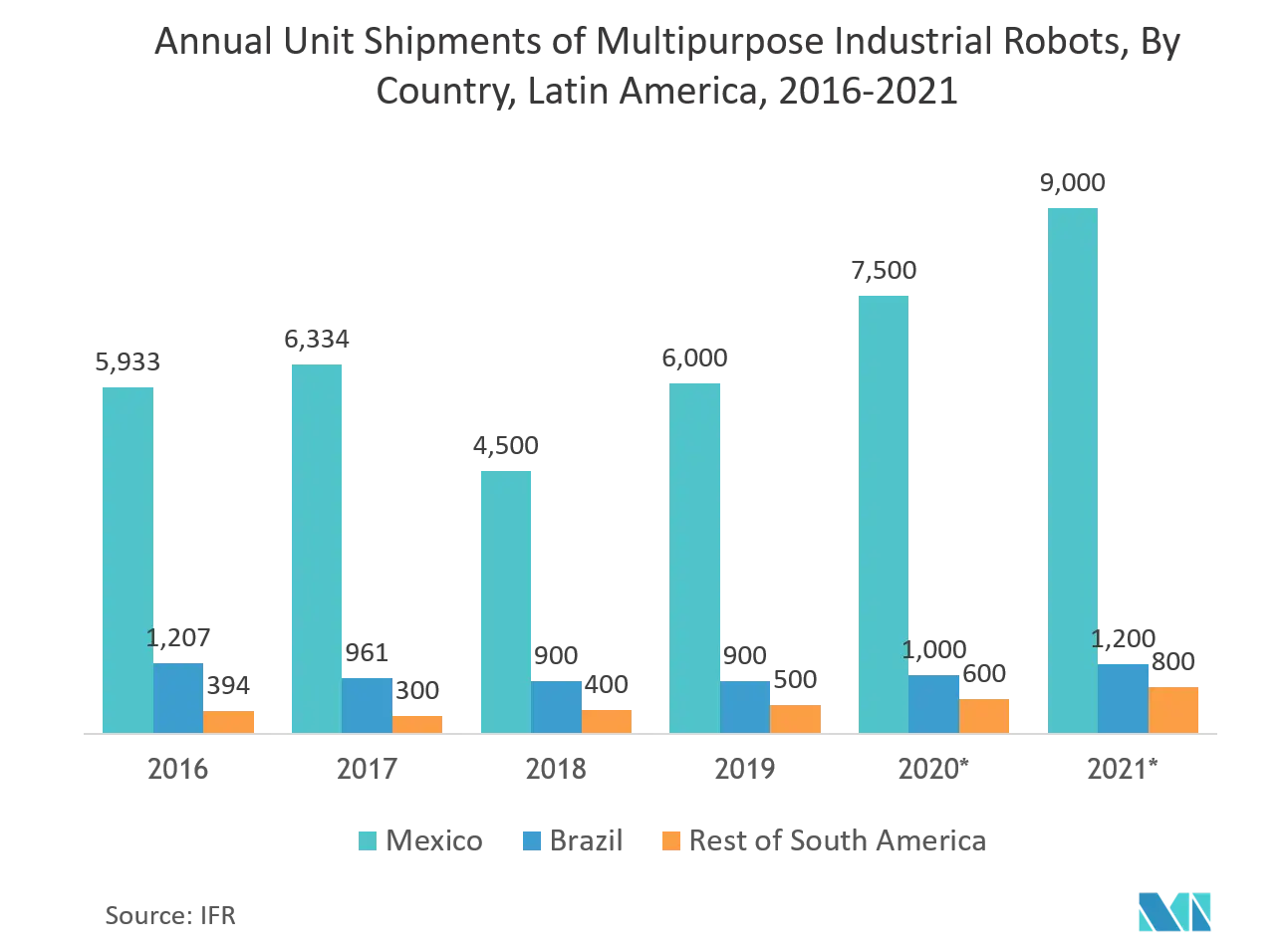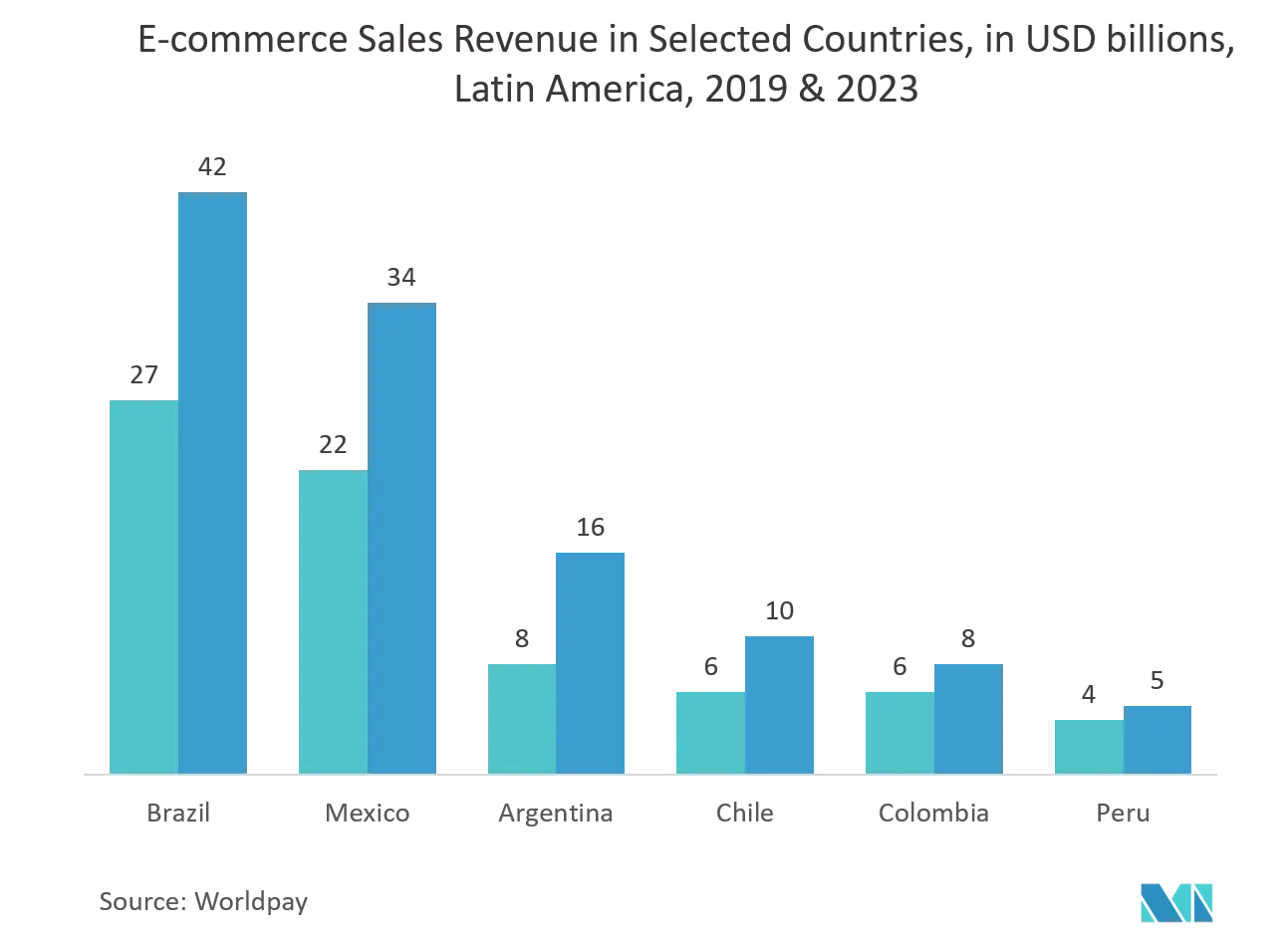Market Trends of Latin America Warehouse Robotics Industry
This section covers the major market trends shaping the Latin America Warehouse Robotics Market according to our research experts:
The Adoption of Industrial Robotics Expected to Act as a Significant Driving Factor
- The demand for industrial robotics is majorly observed in industries, such as automobiles and heavy engineering. The increasing global adoption of industrial robotics across industries is ecpected to create significant growth opportunities in the Latin America region. Robotic investments in January 2019 totaled at least USD 644 million worldwide, with a total of 25 robotics transactions. In 2020, an estimated 1.64 million industrial robots were in operation worldwide.
- In July 2020, SpaceTime Labs and Small Robot Company collaborated to co-develop autonomous aerial and terrestrial robots to transform Latin American agriculture. The strategic partnership will focus on co-developing an on the ground, end-to-end per plant planting, weeds, pests and disease management and nutrition management.
- The traditional industrial robot consists of a manipulator arm designed to perform repetitive tasks. This category also includes systems, like Amazon's warehouse robots and collaborative factory robots that can operate alongside human workers.
- Deploying collaborative robots (cobots) is an excellent move for companies looking to enhance productivity and drive efficiency in order fulfillment operations. Rather than hiring more employees during peak periods and laying them off or keeping them on (at the detriment of bottom lines) as demand ebbs, businesses can deploy cobots as needed. For example, some collaborative robot companies allow warehouse operators to rent, buy, or do both.
- Further, warehouses are large, which means associates walk long distances to find SKUs and transport orders to packing and shipping areas. An average warehouse wastes an estimated 6.9 weeks each year on unnecessary walking and other motion, which amounts to about 265 million hours of labor at the cost of USD 4.3 billion. Collaborative robots also eliminate the need for long walks between functional areas during each picking process stage.

Brazil is Expected to Witness Significant Growth Rate in Adoption
- Owing to the decreasing operating cost, a few of the companies in Brazil are focusing on automating their logistics and increasing the warehouse robotics capabilities. For instance, Aromaty Fragrances, a Brazilian fragrance manufacturer, has completely turned its logistics around by opening an automated warehouse in Louveira (a town in São Paulo State). The warehouse, designed to house raw materials, also features the Mecalux Easy WMS management system.
- The expanding millennial population and the increase in disposable incomes are creating many opportunities for retailers, like Amazon, to introduce new product lines, thereby, creating a considerable need for advanced warehouse facilities. In the case of such high throughput warehouses, AMRs can help in scaling up the efficiencies and mitigating the challenges related to labor.
- The developing e-commerce industry contributes to the need for sorting systems across warehouses for retail and online retail companies. This has resulted in a growing need for managing the delivery process. This factor is leading to investments in warehouse robotics in the country. The established players in the global market, with an extended product portfolio, are utilizing the opportunity of this trend by expanding their reach in the country.

